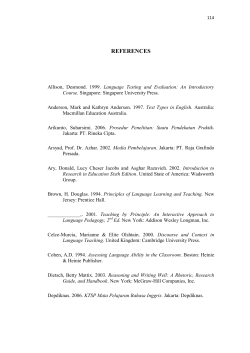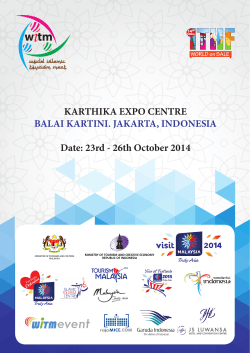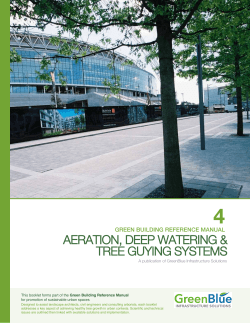
特別講演会案内ポスターをダウンロード
デルフト工科大学 (TU Delft) 特別講演会 The field of interest of the Environmental Technology and Design (ETD) chair concerns the interaction of nature, people, Special Lectures technology and design towards sustainable solutions. At different scales, however starting mainly from the perspective of the デルタの水と緑 - オランダとアジア - urban dynamics and of emerging theories of complexity related to this. It includes a renewed look on the ‘urban metabolism’ and the role of environmental technology, urban ecology and environment behavior focus for the field of urban planning and development, with special emphasis on infrastructures (water, wastewater, energy and real-time smart systems to support these flows and infrastructures). Relevant aspects are the continuing spatial transformation, resilience to (disruptive) change, Green and Blue in Delta: The Netherlands and Asia economic-technological innovation and changing tasks in the public sector before, during and after design and construction of buildings and cities and infrastructures. Scale-free thinking and permanent insight in ecological, spatial, technical and social backgrounds are of vital importance. Arjan van Timmeren 教授 Arjan van Timmeren 教授 御専門は持続可能な都市地域 Netherlands regarding GreenBlue infrastructures (Delta- and regional & urban related transitions in the Dutch towns 産業エコロジーにも造詣が深く、 North Western Europe, like the plan to move the Swedish city of Kiruna and design a new city based on a hybrid GreenBlue デザイン・建築土木技術。 Nijmegen, Zwolle and Rotterdam, and pro-active strategies dealing with climate change related effects), and other projects in 単なるランドスケープデザイン with Grey infrastructure approach, and new Urban Sanitation concepts in Germany and The Netherlands. Finally, also ではなくライフサイクルとして 環境負荷が少ない水 - 緑インフラ GreenBlue infrastructures for Sustainable, Attractive Cities The perspective presented will anticipates on this, including many of the most recent and very innovative projects in The intelligent interconnection of e-Mobility and energy generation in area development will be presented based on the projects in Amsterdam, Schiphol Airport and Rotterdam City Ports residential area development. デザインのフロントランナー。 Main question that this talk addresses is: how to make smart urban plans using the parameters of the natural system in the design of the technical space, the engine room of the city: the subsurface. Linking in an efficient way the hydrological cycle, Fransje Hooimeijer 助教 the soil and subsurface conditions, technology and urban development opportunities is necessary in order to deal with the pressures of climate change, the energy transition, the financial crisis and the current standard for sustainability demands. Since the Industrial Revolution urban development increasingly became dependent on technological interventions to improve the natural conditions of a building site. The development of technology into a perfect state adversely affects our attitude The synergy between the natural system and technical space towards the natural system. It gave a solid foundation on which the natural system was considered controlled; in Dutch called the “maakbaarheid” principle. Urban development after World War II ignores natural conditions and prioritizes socio-economical needs. Civil engineers designed the engine room or technical space by preparing the building sites in such a Chay Asdak 博士 Fransje Hooimeijer 助教 御専門はオランダのデルタラン ドスケープの発達史。 Historical and Current Water Resource Management in Indonesia A Case Study on Jakarta’ s Coastal Area 建築・地域デザインにも精通し way that urban designers could realise any plan that answered to the socio-economical needs. The building of cities had become so complex that deduction and sectorial approach is applied to keep control. We are looking for an emerging path where synergy between the disciplines civil engineering and urban design to make sure that the technical space becomes embedded in the design process of public (surface) space. ている。 パジャジャラン大学 (Padjadjaran University) The greater Jakarta area has changing dramatically in terms of population, and hence, the physical structure of Jakarta is undergoing great evolution from concentric to multiple nucleus model under an unplanned development invaded by urban activities. The evolution goes back from the era of Hinduism-based community in 16th century with its harbour city called 日時 : 2015/3/4 Sunda Kelapa, the era of Islam in 17th century (Jayakarta), the era of the Dutch’ influence, especially in agriculture products 18:30-21:00 trading in the 18th century (Batavia), and the current era of modern harbour city called Jakarta with its future development plan. This evolution results in a significant change of landscape management including water resource management (both traditional and modern techniques). This paper presents and discusses the landscape and water resource management 場所 : 東京大学農学部 弥生講堂 ANNEX changes due to development processes from different era of government in Jakarta’ s coastal area. The discussions will not 至根津駅 浅野キャンパス only focused on the coastal area of Jakarta, but also the land use changes and their driven factors in the upper part of Ciliwung watershed, considering that the delta of Jakarta’ s coastal area is formed by land-based activities in this upper watershed. Chay Asdak 博士 Place:The University of Tokyo Yayoi Auditorium Annex ( 文京区弥生 1-1-1; 東大農学部正門入って左 ) 御専門は水文学。オランダ植民 弥生キャンパス 弥生講堂 ANNEX 言語 : 英語 ( 質疑時通訳 ) Language: English Crucial issues on upstream-downstream hydrological impacts of Ciliwung watershed management will also be covered. 至東大前駅 農正門 ※事前申込不要 地期も含めインドネシアの治水 本郷キャンパス 正門 発達史に詳しい。 赤門 主催:東京大学 緑地創成学研究室 共催: 至本郷三丁目駅 助成:公益財団法人高橋産業経済研究財団 裏面詳細 東京大学 [本郷キャンパスマップ(弥生講堂アネックス)] グリーンインフラ研究会 和歌山大学システム工学部環境システム学科景観生態学研究室 2015/02/14 1:25 連絡先 (Contact):東京大学緑地創成学研究室 土屋一彬 tcy@live.jp
© Copyright 2025




















